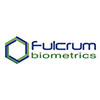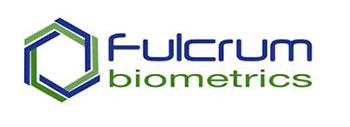
Biometric ID Helps New Guinea Medical Clinic Manage Records and Services
 Fulcrum Biometrics, an international provider, distributor and integrator of biometric systems and devices, has developed and deployed a customized patient identification solution for the New Tribes Mission Medical Clinic in Papua New Guinea. The system, which is based on Fulcrum’s FbF Demographica biometric identification application and customized with the FbF modular development framework, uses an M-Series, multispectral, fingerprint reader from Lumidigm. The unique imaging capabilities of Lumidigm’s biometric sensors allow the clinic to accurately identify people who come into the clinic for healthcare services even if their fingerprints are worn or damaged — a common characteristic of the demographic.
Fulcrum Biometrics, an international provider, distributor and integrator of biometric systems and devices, has developed and deployed a customized patient identification solution for the New Tribes Mission Medical Clinic in Papua New Guinea. The system, which is based on Fulcrum’s FbF Demographica biometric identification application and customized with the FbF modular development framework, uses an M-Series, multispectral, fingerprint reader from Lumidigm. The unique imaging capabilities of Lumidigm’s biometric sensors allow the clinic to accurately identify people who come into the clinic for healthcare services even if their fingerprints are worn or damaged — a common characteristic of the demographic.
The New Tribes Mission (NTM) Medical Clinic serves a vital role in providing medical care and pharmacy services for several thousand local citizens as well as roughly a thousand missionaries and other expatriates living in Papua New Guinea. Since its inception, the clinic had been struggling to keep accurate medical records due to difficulty in accurately identifying their repeat patients. In a culture with hundreds of different indigenous languages and where people often have no form of ID and many are not able to read, write or sign their names, biometrics provides a fast and reliable form of identification.
Using the modular Fulcrum Biometric Framework (FbF), Fulcrum was able to quickly customize the FbF Demographica biometric identification system to provide NTM with a fast, accurate and easy way to register patients in the clinic, and ensure that each individual’s medical records are always associated with his or her proper identity. The application is browser-based and operates on a standard desktop PC, running a Windows OS.
The Lumidigm M-Series, multispectral, fingerprint reader is used for capturing and identifying fingerprints. Once a patient is enrolled in the system, on each subsequent visit to the clinic he or she can sign in by presenting four fingerprints to the scanner. The system immediately pulls up the patient’s identification record, along with the patient’s photograph, and the receptionist verifies that the record matches the patient.
Advantages of the Lumidigm M-Series Fingerprint Sensors
The Lumidigm device is particularly useful in scanning difficult-to-read fingerprints because it reads not only the surface print but also the subsurface print. The environment can also play a role in hampering the capture of a good fingerprint image on conventional sensors. However, very dry or wet conditions do not affect the ability of the Lumidigm M-Series to read fingerprints.
The patented multispectral approach, available only in Lumidigm’s sensors, returns a great image every time. This biometric performance allows NTM to efficiently manage patients’ records, reduce costs associated with duplicate records and service, and ensure continuity of service.
“The fingerprint scanner has been a tremendous help in identifying patients,” said Dr. Kevin Ludwig, chief medical officer for the New Tribes Mission Medical Clinic. “Biometrics provides the best means of certain identification.”
The new system has dramatically reduced the time required to ensure accurate identification of patients. It is much easier and less stressful for the patients to use, and it has been well-received by both the NTM clinic staff and the local population.
Advantages of Using the FbF Framework
The Fulcrum Biometrics FbF framework is a rapid, biometric, application, deployment system comprised of several reusable components that developers can quickly deploy in their environment. The FbF components are specially designed to remove all the complexity for developers who need to use high-quality, biometric identification and authentication but who do not have the experience or the time required to learn the intricacies of developing biometric solutions. Supporting biometric hardware devices, creating reusable controls and implementing fast and accurate biometric server side systems can be a challenge for even experienced developers. The FbF framework allows developers to focus on their application logic and end-user requirements by providing biometric capture, biometric enrollment and biometric matching functions with support for many popular sensors and multiple biometric modalities (fingerprint, iris, face, palm vein and palm print).